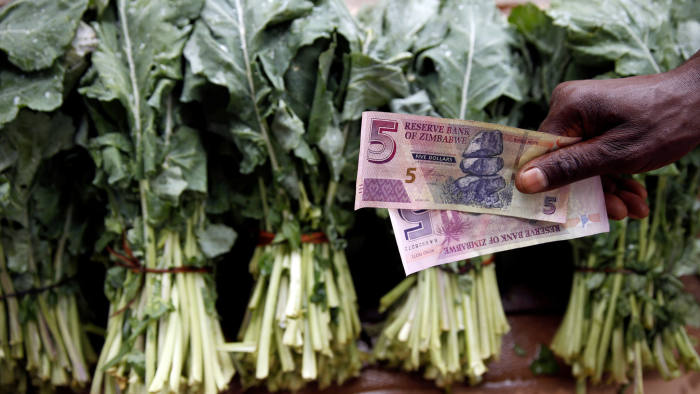We may live inside the greatest economic experiment ever. While in other countries, economists can only pore over history books and theorize on what influences the behaviour of markets, our own can witness as the stewards of our economy test theory after theory on our fragile economy and meagre savings.
The RBZ and the FIU are convinced that they can control inflation by simply whipping all major economic elements into line. In this case, the line in question is the one where the United States dollar was “declared” to be equal to 25 Zimbabwean ones. The foreign currency black market ignored this dubious claim and their rates have continued climbing up to the present point where you can sell your foreign currency there at rates which are nearly three times those offered by the official market. This may remind some of that time when the same currencies were declared to be exactly equal.
So as the value of the local currency continues to plummet against the wishes and demands of the RBZ, the latter has responded by testing various strategies in rapid succession for the last two months which are meant to rein it in. And as one of my lecturers used to say, “There are no wrong answers”. Most of the measures are a last-ditch effort to limit trading on the black market and hopefully also the inflation. Unfortunately most of the measures, in addition to being mere inconveniences to the highly adaptable foreign currency traders, are affecting legitimate businesses and forcing them to change how they conduct their operations.
Increasing numbers of businesses with multi-tier pricing
Ever since physical cash became a problem, it has become more valuable than its equivalent which is in bank accounts and mobile money wallets. This usually means that in many businesses, especially the informal ones, products have more than one price—there is the (physical) cash price and the electronic money one. This practice was not universal but the latest string of RBZ measures nudged more retailers towards it.
Tiered pricing serves two functions for these businesses. The first is that those businesses which need to buy foreign currency off the black market know that the cash rate is lower than the electronic money one—so multi-tiered pricing is their way of passing those savings on to the customers who buy using physical cash. The second of those functions is to simply discourage electronic payments (and encourage cash ones) since, as I mentioned, cash is more valuable than electronic balances.
So how did the RBZ measures encourage the increased adoption of multi-tiered pricing? Well to begin with, since it seems that the FIU is on the warpath, many businesses are opting to keep as much of their earnings as possible away from the banks and platforms upon which the RBZ is imposing regulations and restrictions with an alarmingly increasing frequency. All these regulations tend to reduce the amount of control one has over their own money.
More businesses are exclusively accepting foreign currency
Foreign currency is the lifeblood of many businesses, both formal and informal, which rely on imports. Unfortunately despite RBZ’s failure to recognize the parallel forex market as anything but a threat on of its ability to maintain a tighter rein on inflation, many businesses which need foreign currency to operate can only obtain it from the black market.
The reason that the RBZ and black market rates differ so much is that the former has confusing (and for a smaller business, impossible) criteria for granting access to its meagre foreign currency reserves. The existence of the black market allowed importing business to safely (relatively speaking) prize in the local currency knowing that they could easily trade this on the black market. However since the purpose of the RBZ measures is to make it as hard as possible to trade on the black market, some businesses opted to abandon the local currency altogether and start pricing in United States dollars and Rands.
Fragmentation of the black market
The freezing of some mobile agent lines and the transaction limits imposed on both the ZIPIT platform and on internal bank transfers robbed many foreign currency dealers of their favourite tools of the trade. This, in turn, created wide differences in the black market rates offered by various traders as they scrambled to find loopholes and settled on differing solutions (and platforms). In the last few weeks, some of these differences have been closing as some of the dealers, once again, found their footing despite all the RBZ’s efforts. During all of this, the black market rates have continued to climb undeterred, perhaps even fuelled in part by the actions of the regulator itself which is grasping at straws. The most recent move to persecute rate publishers has seen many stop posting on social media leaving people in the dark. This will likely increase the premium traders charge rather than stop the parallel market.
So what can we expect next?
At this point, no one knows what piece of regulation to expect from the authorities. Some of the regulations which were not well thought out may be scrapped such as the contentious limit on internal bank transfers. However do not let this fool you, the RBZ and the FIU still have plenty of fight in them as demonstrated by their decision to go after individuals and entities who publish black market rates.








